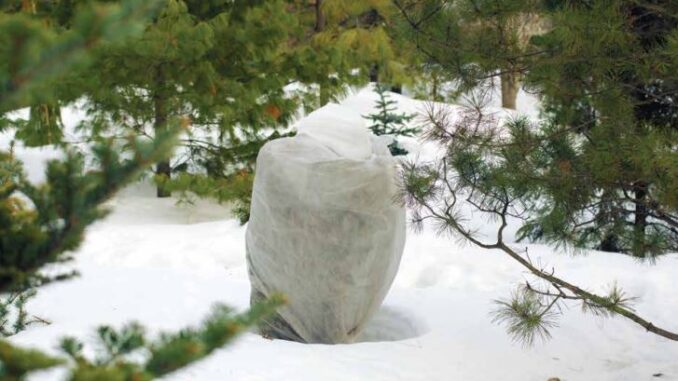
Suppose you spend most of the warm weather nurturing and perfecting your outdoor landscaping. In that case, winter’s entry can cause considerable damage to exposed greenery.
Frost is a significant risk for unprotected plants. The ice crystals that form on leaves when air temperatures dip below 32 degrees cause injury and sometimes kill most flowers and shrubs. As winter approaches, it’s necessary to protect plants to prevent scalding, frozen roots and foliage damage. In warmer regions, merely adding a mulch layer can add enough security to get your greenery the cold. However, extra steps are encouraged in cooler climates to ensure a bountiful return once spring rolls around.
RECOGNIZING FROST CONDITIONS
Paying attention to your local meteorologist can provide a heads up of incoming frost alerts. The Farmer’s Almanac offers helpful tips to recognize its approach.
• Clear sky: Falling afternoon temperatures and cloud-free skies create the perfect conditions for frost development. Once the sun sets, the heat radiates upwards, lowering the temperatures near the ground. However, when clouds are present, they trap the heat and keep warmer conditions lower.
• Wind: Even a gentle breeze can prevent cold air from settling near the ground and plants. When your region faces freezing conditions on a windless day, frost will likely be an issue.
• Humidity and moisture: Humidity is a beneficial condition that may protect your plants. When the air is dry, the soil’s moisture is evaporated, creating a warmth that provides greenery security. Once frost is imminent in your area, it’s crucial to provide your plants with extra levels of protection.
PROTECTIVE MEASURES
Many plants and trees will benefit from anti-desiccant sprays that provide a secure coating to specific foliage. Follow the instructions on your product as some regions require additional treatments throughout the winter. The spray is also helpful in strengthening bulbs before storing and transplanting stressed shrubs before replanting. The experts at Better Homes and Gardens recommend shielding plants with screens or burlap coverings that allow some sunlight and air circulation. Using these barriers helps shrubs or plants avoid contracting disease during frosty conditions.


